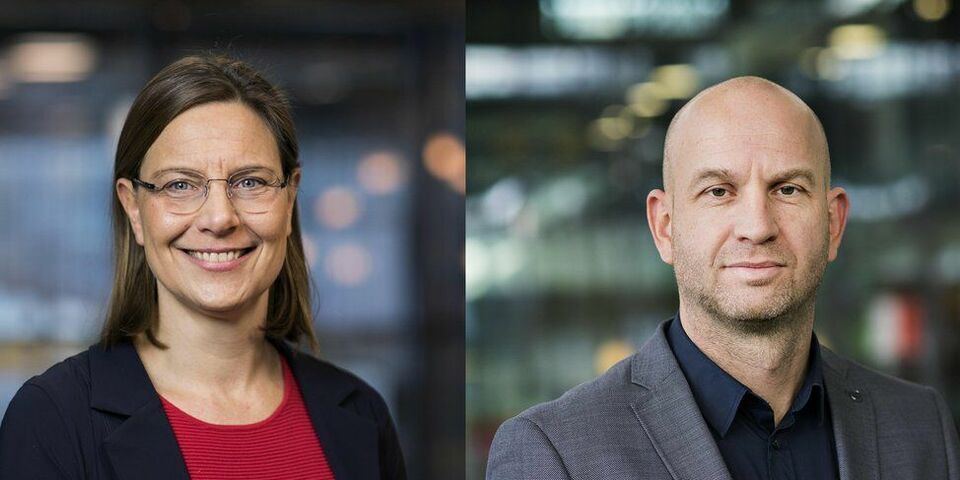ERC Advanced Grants for Bouten and Heemels
TU/e professors Carlijn Bouten and Maurice Heemels did each receive an ERC Advanced Grant of 2.5 million euros for their research proposals. Bouten will investigate how the organization of heart muscle tissue can be restored when the heart muscle heals after an injury. Heemels’ research focuses on establishing a new control engineering paradigm aimed at finally breaking through the known limitations of existing control systems for the high-tech systems of the future.
These grants of 2.5 million euros each are awarded by the European Research Council (ERC) for research by leading scientists who wish to pursue an original high-risk, high-reward research proposal. The researchers use the funding for their research over the next five years.
Each year, the ERC distributes grants to young researchers (starting grants of 1.5 million euros), experienced researchers (consolidator grants of 2 million euros) and top researchers (advanced grants of 2.5 million euros). The grants are similar to the Veni, Vidi and Vici subsidies in the Dutch Research Council’s talent programme.
Thanks to their experience in applying for these national grants, Dutch institutions tend to be successful at winning their European counterparts. This round, the ERC has awarded 27 advanced grants of up to 2.5 million euros to researchers from Dutch knowledge institutions. Only Germany (61) and the UK (45) managed to secure more advanced grants. France almost tied with the Netherlands with 26 grants.
Foreign nationals working in the Netherlands can also win ERC grants on behalf of Dutch institutions, and Dutch researchers can do the same abroad. Ranked by nationality, the Dutch are in fourth place with 26 awards, behind the Germans (58), British (29) and Italians (27).
Order en chaos in living tissue
The ambitious research goals for which Carlijn Bouten at the Department of Biomedical Engineering plans to use the grant capture the imagination. Bouten: “I would like to make the knowledge we have of tissue engineering more applicable to patients and take the step towards ‘remote tissue engineering’. My goal now is to restore the original, anisotropic organization in damaged tissue, in which the cells and structures are chaotically organized after wound healing (as in scar tissue). Indeed, what we currently see in practice is that after damage, the scar and the connection to the healthy tissue are the weak points, both in terms of functionality and of the longevity of the tissue. Actually, I want to use this grant to get to the bottom of how order and chaos arise in living tissues and how we can restore order for better functionality in repaired tissue.”
Regelsystemen
The research of Maurice Heemels, professor of Systems and Control Theory at the department Mechanical Engineering, can also rightly be called high-risk, high-reward. “In control engineering for linear processes we have been working with linear control systems for decades. We know these control systems inside out, there are powerful design tools for them and the underlying linear process models, which are required for the design, are easy to get hold of,” says Heemels. "Examples of this can be found in many high-tech systems and production processes around the world."
According to Heemels it is crucial to look for performance improvements of our controllers, to achieve even greater accuracies and/or speeds in the high-tech systems. "At present, we are already running up against the limits of linear controllers in practice. Therefore, work has also taken place already on non-linear or so-called ‘hybrid’ control technology for linear and also non-linear processes. In hybrid control technology, we are trying to intelligently switch between different linear controllers, because we expect this to produce enormous performance improvements."
However, this is proving difficult to translate into practice, says Heemels. "This is mainly due to the fact that the power of the design tools of hybrid controllers is in stark contrast to that of the tools available for linear controllers. The lack of an underlying, conclusive theory that underscores this hybrid control technique for linear processes is to blame, which means it remains difficult to capitalize on the potential benefits of hybrid controllers in practice.”
“But, it is crucial to look for performance improvements of our controllers, to achieve even greater accuracies and/or speeds in the high-tech systems. At present, we are already running up against the limits of linear controllers in practice. Therefore, work has also taken place already on non-linear or so-called ‘hybrid’ control technology for linear and also non-linear processes. In hybrid control technology, we are trying to intelligently switch between different linear controllers, because we expect this to produce enormous performance improvements."
Heemels wants to thoroughly address this gap in control technology from the ground up. “I want to start working with so-called projection-based controllers (PBC). These are specific controllers in which I combine ideas from linear control engineering with smart mathematical projection operators, which can directly lead to higher performance in terms of accuracy and speed (throughput) of the systems. To understand and effectively design these control systems, an entirely new mathematical descriptive model is needed.”
More information about the research projects of Bouten en Heemels can be found here.


Discussion